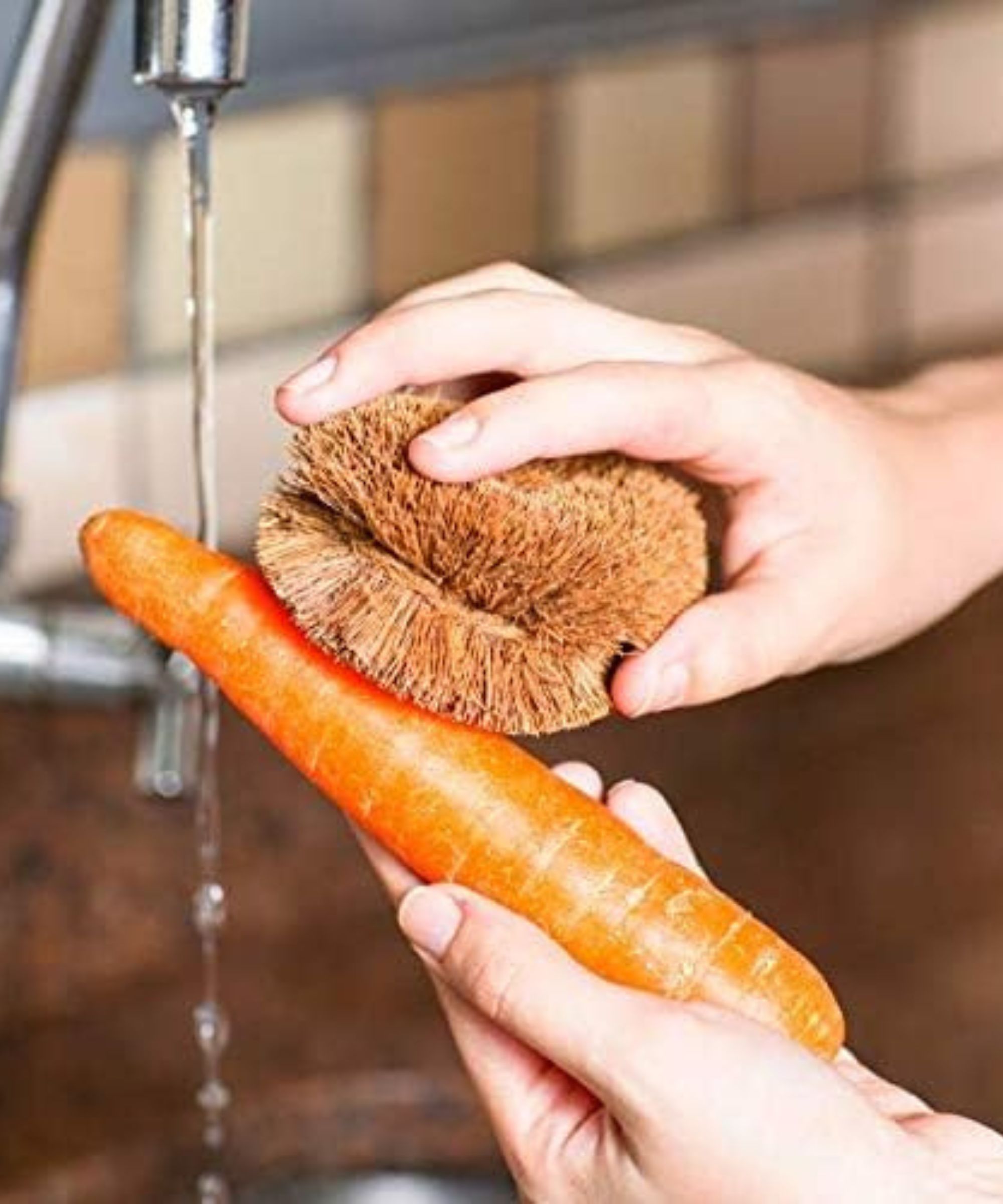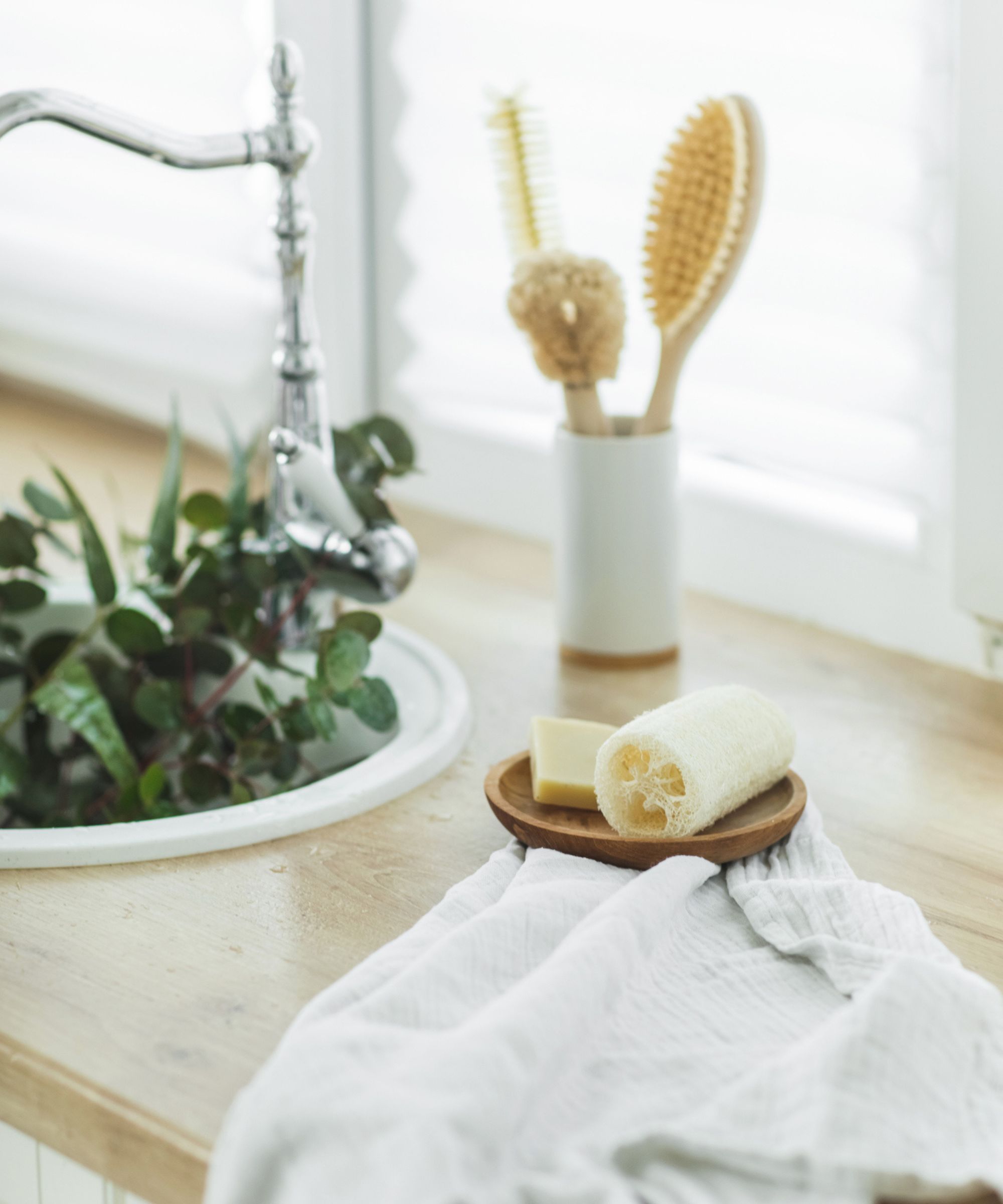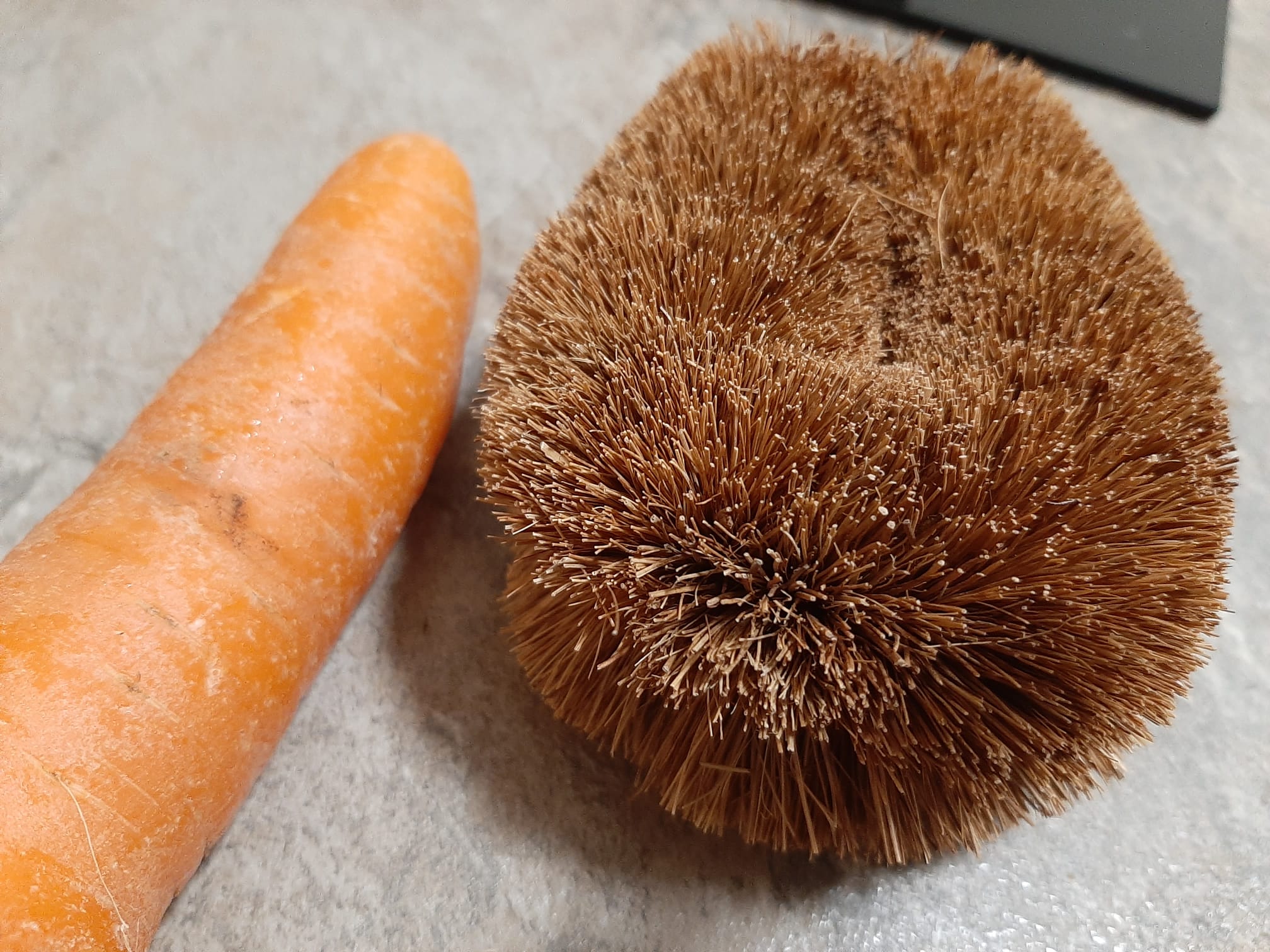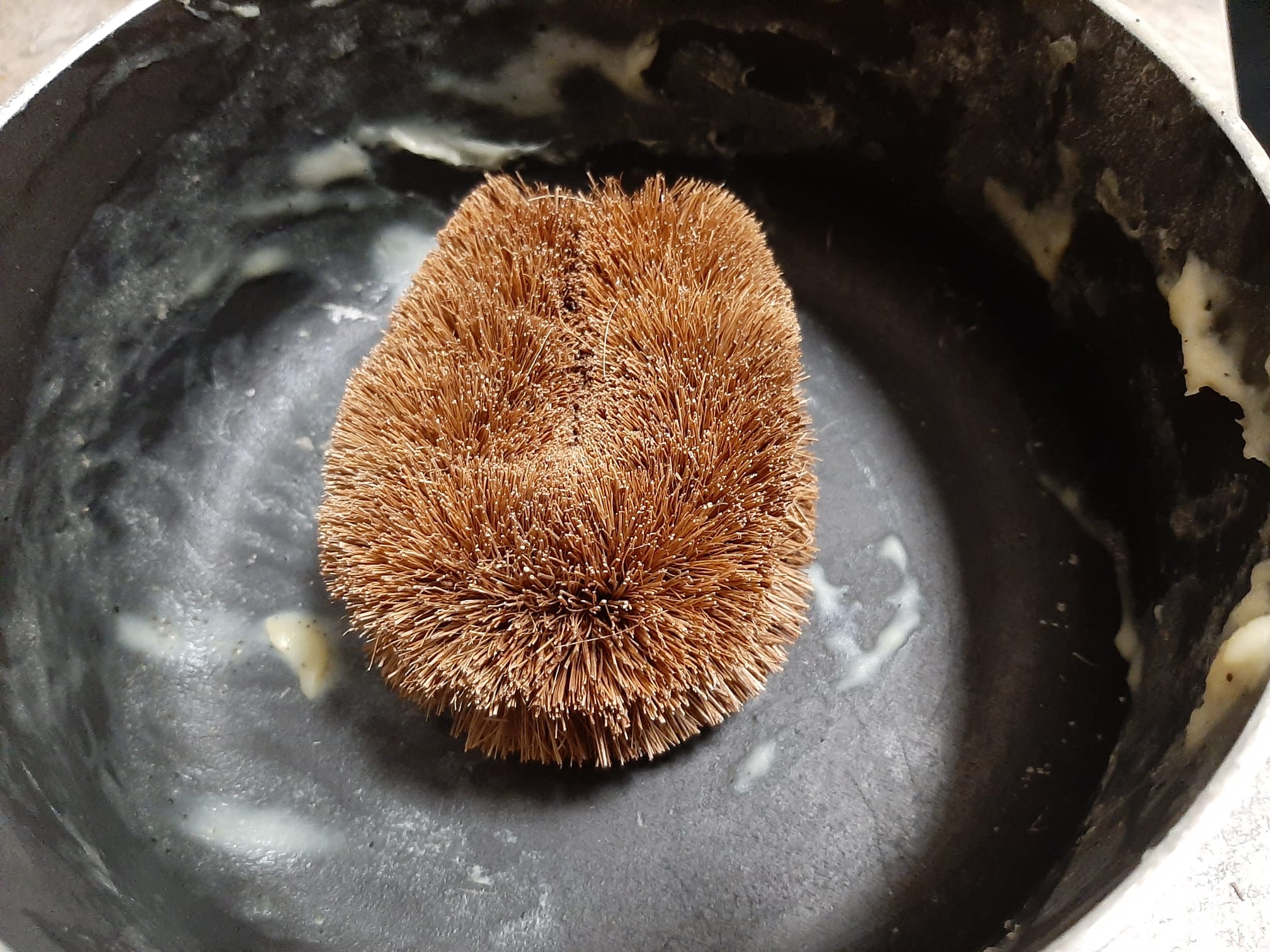My brilliant Japanese Tawashi brush has made 'wet cleaning' in my home an absolute breeze – it's a dish-cleaning savior
This unique curved brush is unlike any other cleaning tool I've used


It might surprise you to hear I have never used a dishwasher. That means any stubborn and annoying stains on my dishes are ones I tackle by hand. For most of my life, I've used standard sponges and an overnight soak in the sink, plus elbow grease to get the job done.
That was until I learned in Japanese culture, the answer to such struggles is the Tawashi curved brush: a special cleaning tool unlike anything else you're likely to come across in the average kitchen.
I got hands on one of these non-toxic home essentials to see if it is something worth investing in and I was blown away by how versatile and effective it was.
What is a Tawashi brush?

You can get a pack of three Tawashi brushes from Amazon, pictured, to dedicate to different cleaning tasks and avoid cross contamination.
A Tawashi brush is a Japanese scrubbing brush made with course bristles made of natural fibers such as palm or coconut coir, and you use it in place of a sponge, be on dishes or scrubbing fruit. Though, because the bristles, which are usually in a rounded brush grouping, are course, it's recommended to avoid scrubbing delicates or items with coatings such as non-stick pans.
Tawashi brushes also vary in size for ease when cleaning different items, and some have handles to help you scrub. After use, allow your brush to fully air dry once rinsed with warm water or its quality will deteriorate faster.
Karina Toner, a professional cleaner and operations manager at Spekless, has used a Tawashi brush before. She says, 'It's important to give your Tawashi brush a good shake to get rid of excess water, and then let it air dry completely. Definitely make sure not to leave it in a wet sink either, or soak it for long periods, as that can weaken the natural fibers.'
If your Tawashi brush is well looked after, it can last several years, though exactly how long will depend on factors such as the frequency of use, what you're cleaning, and if you have made any Tawashi brush mistakes.
Design expertise in your inbox – from inspiring decorating ideas and beautiful celebrity homes to practical gardening advice and shopping round-ups.
'A common mistake people make when using a Tawashi brush is exposing it to harsh chemicals,' says Karina. 'Since the brush itself is almost entirely made from natural fibers [minus the metal loop or handle] they don't mix well with chemicals, which break down the fibers and shorten the brush's lifespan.'
Instead, following this cleaning tip: 'Stick to natural or mild soaps [such as the fragrance-free Dapple baby bottle and dish soap from Walmart] and your tawashi brush will thank you for it.'
Castille Soap available at Walmart, is also a brilliant and versatile non-toxic home essential.
And the best part? Since a Tawashi brush is made from all-natural fibers, at the end of its life, simply remove the metal handle and use it as an unusual compost ingredient.

Karina has been a professional cleaner and operations manager at Spekless Cleaning, one of the top-rated cleaning companies in D.C, for over six years. With a strong commitment to quality, Spekless proudly serves over 10,000 customers each year across Washington, D.C., Virginia and parts of Maryland, setting the standard for excellence in the cleaning industry.
In the kitchen: Trying out a tawashi brush for myself

The main kitchen cleaning jobs people use Tawashi brushes to tackle are stubborn grime such as dried sauces in pans, cleaning burnt pans, and washing fruit and produce. The abrasive nature of a Tawashi brush is more effective than a softer, typical sponge at dislodging food remnants and getting into the nooks and groves of a vegetable's surface for the most sanitary clean.
'Tawashi brushes are incredibly versatile – surprisingly gentle, but relentless on dirt,' says Karina. 'I first started using one for vegetables like carrots and potatoes, and it blew me away how efficiently it removes dirt without peeling off the skin. I’ve also found them particularly effective for cleaning cast iron and cleaning stainless steel pans, most especially for burnt-on residue that usually feels like a workout to remove. Tawashi brushes hold their shape and bristle strength even during tough scrubbing.'
I decided to get hold of a Tawashi brush and test out these cleaning jobs for myself. I've never used anything aside from a dish brush or sponge to clean up my kitchenware or produce, so I thought it would be interesting to see if it felt any easier.
Test 1: Cleaning vegetables

I tried my Tawashi brush in the kitchen and found it to be an excellent scrubber
I've heard some people say Tawashi bristles are so dense that cleaning vegetables with it can cause the skin to peel off, whereas others say it's a game-changer.
I went into it with an open mind, and very soon after understood the mixed reviews. If you scrub with force on your vegetables instead of gently, the skin will come off. If you're more gentle, the bristles of a Tawashi brush are great at getting into groves that need cleaning.
I tried mine out cleaning carrots and potatoes, but I wouldn't recommend using a Tawashi brush, available at Walmart, for more delicate items like celery as it will likely snap.
The bristles are rather hard and scratchy, so if you're cleaning for a while your hands might get sore. Cleaning gloves are a useful and essential cleaning tool to add to your collection. I like the Playtex Living Reusable Cleaning Gloves or the Great Value Latex-Free Household gloves, both from Walmart when using a Tawashi brush.
I found my vegetables were definitely cleaner than I knew they could be, but next time I wouldn't scrub as hard as part of my carrot became bald.
Test 2: Cleaning stubborn stains

Anyone who knows me can attest to just how much I love pasta, especially in cheese sauce. But what I don't love so much is the cleaning job it leaves behind which, if I don't tackle it immediately, only becomes more difficult.
For this test, I enjoyed my cheesy pasta and left the saucepan to sit and set for two hours before testing out my Tawashi brush. I worried at using a Tawashi brush might on my pots and pans would leave scratches and become a mistake to avoid when washing kitchenware, leading to needing to replace my pots and pans.
I also worried I would have trouble cleaning the curve of the pan as the Tawashi brush was less flexible than my regular dish sponge. However, I was happy to be proved wrong on both.
The curved shape fit perfectly against the curve of my pan, which was great for cleaning, and no scratches were left behind when I used a small amount of force. But it was rather difficult to clean the sticky cheese sauce off of the brush itself after the pan was clean, so I had to use my fingers to pick off stringy residue.
Perhaps if the cheese sauce had more time to dry this wouldn't have been an issue, but overall the Tawashi brush was really good at removing the stubborn sauce stains from my kitchenware with less elbow grease than using a regular sponge.
My verdict
If you're someone who enjoys cooking and has a lot of kitchenware, a Tawashi brush would be a great addition to your kitchen's cleaning supplies, especially if you're looking to swap out toxic items in the home.
These brushes are compact, durable, and will leave your items free of grime. Plus, Tawashi brushes have many other uses in the home including scrubbing down furniture outside, ready for summer BBQs. Here's some other ways to put them to work:
- Sneakers: If you gently wipe your sneakers in circular motions using a Tawashi brush, it can help to lift stains from fabric components. Be careful not to apply too much pressure though as this could cause damage to your shoe's fibers.
- To remove cutlery marks on plates: Tawashi brushes, if used gently on plates, can work to buff out small scratches and marks at the same time as cleaning cookware.
- Cleaning sinks and baths: Being tough enough to remove stubborn stains but gentle enough not to cause scratches on non-delicate materials, your sink and tub will shine after a deep clean using a Tawashi brush.
Adding an all-natural Tawashi brush to your home will enhance your ability to clean without bringing any harmful plastics or microplastics into your home.
If you're looking to make more simple switches in your home, we recommend banishing your kitchen sponge and considering how to replace black plastic tools for a healthier, non-toxic kitchen.

Ciéra is a writer and regional laureate with particular passions for art, design, philosophy and poetry. As well as contributing to Homes & Gardens, she's an Editorial Assistant for Design Anthology UK and a contributing writer for magazines including Livingetc, Apartment Therapy, House Beautiful and Ideal Home. Previous commendations of hers include being Highly Commended by The Royal Society of Literature and receiving a prestigious MA Magazine Journalism scholarship to City, University of London.
